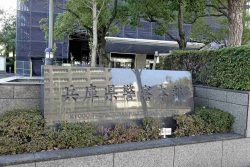- Yomiuri Editorial
- Local train lines in the red
Consider transportation alternatives based on actual local circumstances
11:53 JST, August 1, 2022
How will means of transportation in rural areas be protected? Rather than leaving the question to railroad companies, local governments and the central government must be actively involved in considering realistic solutions.
For the first time, East Japan Railway Co. (JR East) has published a report on income and expenditure by sections for local lines with low passenger numbers. The report covered 66 sections on 35 lines carrying a daily average of fewer than 2,000 passengers per kilometer. All these sections posted losses in fiscal 2019.
The total operating kilometers of these lines accounts for one-third of the overall operating distance of JR East’s conventional lines. The total deficit amounted to ¥69.3 billion per year. On some sections, it is said to cost ¥15,000 or more to generate ¥100 in revenue.
All JR companies, with the exception of Central Japan Railway Co., have already disclosed reports with similar sectional breakdowns of income and expenditure balances.
Traditionally, JR East and West Japan Railway Co. have made up for losses on local lines with profits from their conventional lines in urban areas and also from their Shinkansen services. However, with the increase in telecommuting and other factors, railroad revenues in urban areas have also declined. The prerequisite for maintaining local lines can be said to have crumbled.
The situation is even more serious for Kyushu Railway Co., Hokkaido Railway Co. and Shikoku Railway Co.
The number of passengers on local lines is declining due to a shrinking population and the increase in use of private automobiles. The COVID-19 pandemic has dealt a further blow. Passenger demand is not expected to return to pre-pandemic levels, and the time has come to take measures.
Not only Japan Railway companies, but also other local railway companies are suffering from the same situation.
An expert panel of the Land, Infrastructure, Transport and Tourism Ministry has recommended that the central government, local governments and railroad companies establish a framework to discuss the keeping or abolishing of lines that carry fewer than 1,000 passengers per kilometer daily.
The panel proposed that if requested by either the railroad companies or local governments, a council would be established under the initiatives of the central government, with a conclusion to be reached within three years. Local governments, averse to new burdens, have been reluctant to engage in such discussions. It is hoped that the proposed framework will have the effect of encouraging discussions.
Railroad services, originally suited for mass transportation, have high fixed costs for equipment and other expenses, and they become less efficient as the number of passengers declines.
Converting railroad operations to bus services, which cost only about 10% as much to operate as railways, is a strong candidate. Some areas are utilizing a new transportation system in which buses travel in dedicated lanes. While buses are not as fast as railroads, they can be made more convenient by increasing the number of stops and the number of runs.
The expert panel urged the central government to provide financial support to local governments that are converting railway services to buses and other forms of transportation. The central government should also expand its support to secure local means of transportation.
At the same time, consideration should be given to local situations, such as the existence of lines that are essential for commuting to school or work, and sections where it is difficult to use buses. It is important that local governments, which know their own situations well, first come to the table to discuss the matter with railroad companies.
(From The Yomiuri Shimbun, Aug. 1, 2022)
"Editorial & Columns" POPULAR ARTICLE
-

Violations of Subcontract Law: Major Automakers Must Eliminate Old Practices
-

Local Governments’ Tax Revenues: Devise Ways to Correct Imbalances in Tax Sources
-

5 Japanese Business Dinner Mistakes to Avoid — and What They Taught Me About Business in Japan
-

Heavy Rains in Asia: Support for Victims, Flood-Control Measures Urgently Needed
-

Rice Coupons: A Misguided Approach to Countering Rising Prices
JN ACCESS RANKING
-

Keidanren Chairman Yoshinobu Tsutsui Visits Kashiwazaki-Kariwa Nuclear Power Plant; Inspects New Emergency Safety System
-

Imports of Rare Earths from China Facing Delays, May Be Caused by Deterioration of Japan-China Relations
-

University of Tokyo Professor Discusses Japanese Economic Security in Interview Ahead of Forum
-

Japan Pulls out of Vietnam Nuclear Project, Complicating Hanoi’s Power Plans
-

Govt Aims to Expand NISA Program Lineup, Abolish Age Restriction




















